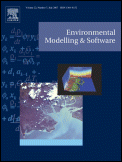Modelling with knowledge: a review of emerging semantic approaches to environmental modelling
Abstract
Models, and to a lesser extent datasets, embody sophisticated statements of ecological knowledge. Yet, the knowledge they contain is rarely self-contained enough for them to be understood and used - by humans or machines - without the ecologist’s mediation. This severely limits the options in reusing ecological models and connecting them to dataset or other models. The notion of ‘declarative modelling’ has been suggested as a remedy to help design, communicate, share and integrate models. Yet, not all these objectives have been achieved by declarative modelling in its current implementations. Semantically-aware Ecological Modelling (SEM) is a way of designing ecological datasets and models based on the independent, standardized formalization of the underlying ecology, resulting from merging the rationale of declarative modelling with the most recent advances in computer science and integrative visions such as the Semantic Web. In this paper, we discuss the present and preview the future of semantic modelling in Ecology: from the semantically-mediated integration approach, where formal knowledge is the key to automatic integration of datasets, models and analytical pipelines, to the more far-fetched but promising ‘strong’ approach where the knowledge is the key to not only to integration, but also to overcoming scale and paradigm differences and to novel potentials for model design and automated knowledge discovery.
Download full text in pdf format
 Published as:
Published as:
F. Villa,
I. N. Athanasiadis,
A. E. Rizzoli,
Modelling with knowledge: a review of emerging semantic approaches to environmental modelling,
Environmental Modelling and Software, 24:577-587,
2009, doi:10.1016/j.envsoft.2008.09.009.
You might also enjoy (View all publications)
- Corn yield estimation under extreme climate stress with knowledge-encoded deep learning
- AirCast: Improving air pollution forecasting through multi-variable data alignment
- A virtual lab maturity model for guiding the co-development of advanced virtual research environments
